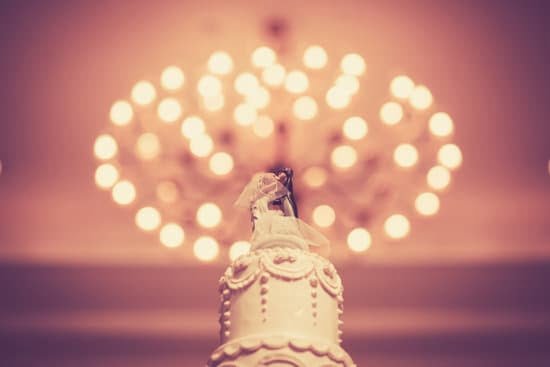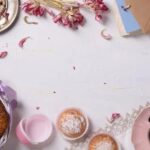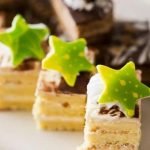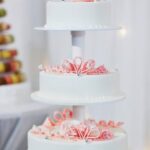Cake decor butterflies have become increasingly popular in the world of baking and cake decorating. These delicate and beautiful creatures add a touch of elegance and whimsy to any cake, making them a favorite choice for special occasions. From weddings to birthdays, butterflies have become a go-to decoration for creating stunning and visually captivating cakes.
Butterflies hold deep symbolism and meaning in many cultures, representing transformation, beauty, and new beginnings. This makes them the perfect choice for adding a meaningful touch to any celebratory cake. In this article, we will explore the history of using butterflies as cake decorations, the different types available, how to make them yourself, and creative ways to incorporate them into various cake styles.
Whether you’re looking to learn about the origins of this trend or seeking inspiration for your own butterfly cake decor creations, this comprehensive guide will provide you with all the information you need to make your cakes truly stand out. So let’s dive into the enchanting world of cake decor butterflies and discover the endless possibilities they offer for creating show-stopping confections.
History of Cake Decor Butterflies
The use of butterflies as cake decorations can be traced back to ancient times, where they were often used to symbolize transformation and new beginnings. In many cultures, butterflies are seen as a representation of the soul or a spiritual rebirth, making them a popular choice for cake decor during special occasions such as weddings and birthdays.
The trend of using butterflies on cakes has evolved over the years, with different traditions and popular cultures influencing the way these delicate creatures are incorporated into cake designs.
Historically, butterflies have been fashioned out of various materials such as sugar, fondant, and even paper to adorn cakes. In ancient China, it was common practice to use real butterfly wings on cakes as a symbol of good fortune and happiness.
However, this practice has since evolved to incorporate edible versions made from sugar or fondant to ensure the safety of consumers. Today, there is a wide range of options available when it comes to cake decor butterflies, including different sizes, colors, and styles that cater to various preferences and themes.
Popular culture has also played a significant role in shaping the history of cake decor butterflies. From fairy tales depicting magical lands filled with butterflies to modern fashion trends incorporating butterfly motifs, these influences have made their way into the world of cake decorating. Whether it’s creating whimsical birthday cakes for children or adding an elegant touch to wedding cakes, the history of cake decor butterflies is rich with tradition and cultural significance.
- Edible vs non-edible butterflies
- Different materials used for creating butterfly cake toppers
- Sizes, colors, and styles available in cake decor butterflies
Types of Cake Decor Butterflies
Cake decor butterflies come in a variety of types, each offering unique features and benefits for cake decorators. Whether you prefer edible or non-edible options, there are countless materials, sizes, colors, and styles available to suit your specific cake decorating needs.
Edible vs. Non-Edible Butterflies
One of the main considerations when choosing cake decor butterflies is whether you want them to be edible or non-edible. Edible butterflies are typically made from delicate wafer paper, sugar paste, or fondant, allowing them to be safely consumed as part of the cake. Non-edible butterflies, on the other hand, are often crafted from materials such as plastic, fabric, or feathers and are meant for decorative purposes only.
Different Materials Used for Creating Butterfly Cake Toppers
For those looking to create their own butterfly cake toppers, there is a wide range of materials available for crafting these delicate decorations. Edible butterflies can be made from edible sheets of rice paper or wafer paper and colored with food-grade dyes. Non-edible butterflies may be constructed from lightweight plastic, fabric, feathers, or even metal.
Sizes, Colors, and Styles Available in Cake Decor Butterflies
When it comes to cake decor butterflies, the possibilities are endless in terms of size and color. From tiny delicate wings to larger-than-life statement pieces, butterflies can vary in size to suit any type of cake design.
Similarly, an array of vibrant colors and styles allows decorators to choose butterflies that complement their overall theme or aesthetic. Whether you’re aiming for a classic look with traditional monarch butterfly colors or seeking something more whimsical with bright jewel-toned patterns, there are countless options available for creating stunning butterfly cake decorations.
How to Make Cake Decor Butterflies
Making cake decor butterflies can be a fun and creative way to add a magical touch to your cakes. Whether you’re a professional baker or just enjoy baking as a hobby, creating edible or non-edible butterflies can elevate the overall look of your cake. There are various techniques for making these delicate decorations, and with some practice, you can master the art of crafting beautiful butterflies for your cakes.
For those who prefer edible butterflies, using materials like fondant or gum paste is common. These pliable mediums allow for easy shaping and detailing to create realistic-looking butterflies. You can also use edible food coloring to paint intricate patterns and designs on the wings of the butterflies. Non-edible options include using materials such as paper, fabric, or plastic to create butterfly toppers that can be easily removed before serving the cake.
One popular DIY technique for making fondant butterflies involves using butterfly-shaped molds or cutters. These tools make it easier to achieve uniform shapes and sizes for your decorations.
Once you have cut out the butterfly shapes, you can use additional tools like veining mats or embossers to add texture and detailing to the wings. For sugar butterflies, piping royal icing onto wax paper in the shape of butterfly wings and allowing them to dry before assembling the final decoration is a common method.
Incorporating cake decor butterflies into your designs adds an extra layer of artistry and charm to your cakes. With a variety of techniques and materials available, you can tailor your butterfly decorations to suit the style and theme of any occasion.
| Types of Cake Decor Butterflies | Information |
|---|---|
| Edible vs non-edible butterflies | Fondant, gum paste, paper or fabric options |
| Different materials used for creating butterfly cake toppers | Fondant, gum paste, royal icing, paper, fabric, plastic |
| Sizes, colors, and styles available in cake decor butterflies | Variety of options for customization based on personal preference and cake theme |
Using Cake Decor Butterflies in Different Cake Styles
When it comes to cake decor, butterflies are a versatile and popular choice for adding a touch of elegance and whimsy to various cake styles. Whether it’s a wedding cake, birthday cake, or seasonal/holiday-themed cake, incorporating butterfly decorations can enhance the overall design and aesthetic appeal.
Here are some different cake styles where cake decor butterflies can be used:
- Wedding Cakes: Butterflies are often used on wedding cakes to symbolize beauty, transformation, and new beginnings. They can be incorporated into the cake design in a variety of ways, such as delicate edible butterflies scattered across the tiers or larger focal point butterflies made of sugar or fondant.
- Birthday Cakes: For birthday cakes, butterfly decorations can add a playful and charming element. Whether the cake is for a child’s birthday or an adult’s celebration, colorful and whimsical butterfly toppers can bring a sense of joy and celebration to the dessert.
- Seasonal and Holiday Cakes: Butterflies can also be used to create themed cakes for various holidays or seasons. For example, using pastel-colored butterflies for springtime cakes or creating festive holiday-themed butterflies for Christmas or Halloween cakes.
In each of these different cake styles, the use of butterfly decorations offers an opportunity to elevate the design and create a visually stunning centerpiece for any event or celebration.
Ultimately, the versatility of butterfly decorations allows them to complement virtually any style or theme of cake design, making them a popular choice for both professional bakers and DIY enthusiasts alike.
Incorporating Cake Decor Butterflies With Other Decorative Elements
Mixing and Matching
When it comes to cake decorations, butterflies can be beautifully complemented by other elements such as flowers, ribbons, and edible pearls. Mixing and matching butterflies with these elements can create a harmonious and visually stunning cake design. For example, pairing delicate pastel-colored butterflies with dainty roses or cascading greenery can elevate the overall aesthetic of the cake. It’s important to consider color coordination and balance when incorporating different decorative elements with cake decor butterflies.
Creating a Cohesive Design
To achieve a cohesive and visually appealing cake decor with butterflies, it’s essential to ensure that all the decorative elements blend seamlessly together. This can be achieved by selecting a central theme or color palette for the cake and its embellishments.
By having a cohesive design concept, the use of butterflies can enhance the overall visual impact of the cake without overpowering other elements. Whether it’s a whimsical birthday cake or an elegant wedding cake, thoughtful planning and coordination of all decorative elements will result in a beautifully unified cake design.
Balancing the Overall Design
While butterflies are an enchanting addition to any cake decor, it’s crucial to strike a balance between the use of butterflies and other decorative elements. Overcrowding a cake with too many embellishments can detract from its elegance or charm.
When incorporating butterflies with other decorative elements, it’s important to consider scale, placement, and visual weight. By strategically placing butterflies alongside other decorations while considering negative space, texture, and form, a well-balanced and visually captivating cake design can be achieved.
By carefully mixing, incorporating cohesively with other decorative elements like flowers or ribbons which should be balanced while using on cakes help in giving unique look by using
Tips for Storage and Transportation of Cake Decor Butterflies
Cake decor butterflies are delicate and beautiful additions to any cake, but they require special care when it comes to storage and transportation. Whether you’re using edible or non-edible butterflies, it’s important to ensure that they stay in perfect condition until they are ready to be displayed on the cake.
When it comes to storing edible butterflies, it’s essential to keep them in a cool, dry place away from direct sunlight. Edible butterflies are often made from wafer paper or fondant, and exposure to moisture or heat can cause them to lose their shape or color. It’s best to store them in an airtight container with a desiccant packet to absorb any excess moisture.
Non-edible butterfly decorations can be a bit more durable, but they still need proper handling. Store them in a sturdy container with layers of tissue paper between each butterfly to prevent any damage during storage. Keep the container in a cool, dry place out of direct sunlight.
During transportation, whether you’re delivering the cake yourself or having it shipped, take extra precautions with the butterflies. If using non-edible decorations, secure them onto the cake using royal icing or edible glue. For edible butterflies, wait until the last minute before placing them on the cake so they don’t have time to soften and lose their shape.
To further protect your beautiful cake decor butterflies during transportation, consider investing in specialized cake caddies that have compartments for keeping delicate embellishments safe and secure during travel.
| Storage Tips | Transportation Tips |
|---|---|
| Store edible butterflies in an airtight container | Secure non-edible butterflies onto the cake with royal icing or edible glue |
| Keep non-edible butterfly decorations in a sturdy container with tissue paper | Wait until last minute to place edible butterflies on the cake |
| Store both types of butterflies away from direct sunlight and moisture | Consider using specialized cake caddies for transportation |
Showcase and Inspiration
In conclusion, cake decor butterflies have become a popular and beautiful addition to cake designs, adding an elegant and whimsical touch to any special occasion. The history of using butterflies as cake decorations dates back to ancient traditions and has evolved over the years to incorporate various types, styles, and colors. Whether edible or non-edible, butterflies can be created using different materials and techniques, allowing for endless creativity in cake decor.
The use of cake decor butterflies extends beyond just weddings, as they can also be incorporated into birthday cakes and themed seasonal or holiday cakes, adding a sense of festivity and charm. When paired with other decorative elements such as flowers and ribbons, butterflies create a cohesive and visually appealing cake design that is sure to impress.
For those looking to experiment with butterfly cake decorations, there are numerous DIY techniques available for creating edible and non-edible butterflies. Additionally, examples of stunning cake designs featuring butterfly decorations can serve as inspiration for readers to explore their own creativity in incorporating butterflies into their cake decor.
With the right tips for storage and transportation, these delicate yet stunning decorative elements can be preserved and used for future occasions. Whether used sparingly or as the focal point of a cake design, cake decor butterflies continue to capture the imagination of both bakers and recipients alike.

Welcome to our cake decorating blog! My name is Destiny Flores, and I am the proud owner of a cake decorating business named Cake Karma. Our mission is to provide delicious, beautiful cakes for all occasions. We specialize in creating custom cakes that are tailored specifically to each customer’s individual needs and tastes.





